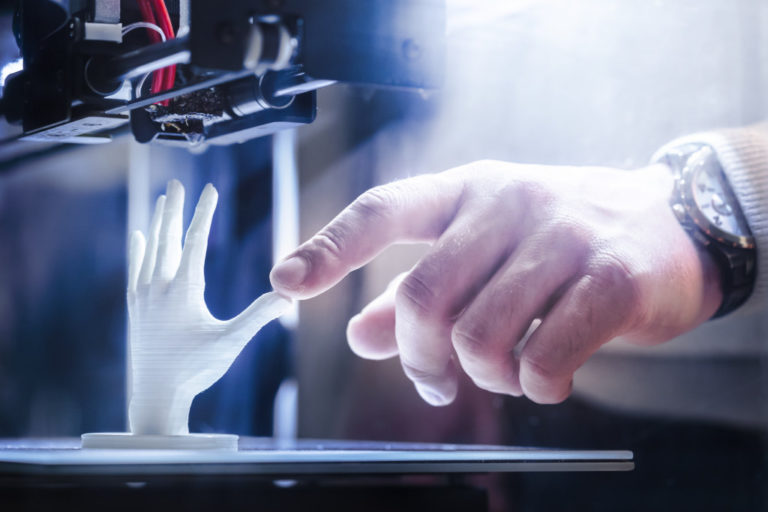- SPC helps manufacturers reduce costs, identify and address defects quickly, and respond to customer feedback faster.
- Real-time monitoring systems enable manufacturers to detect and fix issues before they escalate, reducing downtime and improving quality.
- Predictive maintenance uses machine learning algorithms to predict when equipment is likely to fail, reducing the chances of costly mistakes.
- Supply chain optimization using advanced analytics and real-time data can help manufacturers improve efficiency.
The manufacturing industry has significantly transformed over the past few years thanks to innovative technologies. With the rise of automation, robotics, and advanced analytics, manufacturers can streamline processes and optimize their operations like never before. Here’s an overview of how technology is revolutionizing the manufacturing industry and the benefits it offers.
Quality Control
One of the biggest challenges in manufacturing is ensuring consistent quality in every product. Quality control is critical to customer satisfaction and loyalty; even a minor defect can result in significant losses for the manufacturer. However, traditional quality control methods can be time-consuming, labor-intensive, and error-prone. This is where technology comes in.
Statistical Process Control
Statistical Process Control (SPC) is a data-driven quality control method that uses statistical analysis to monitor and control a process. It helps manufacturers identify and eliminate process variations that can lead to defects and ensures that the final product meets the required specifications. SPC is a powerful tool that allows manufacturers to track process performance, identify trends, and make data-driven decisions to improve quality.
With the rise of big data and machine learning, investing in an SPC software solution is becoming increasingly attractive. It helps manufacturers reduce costs, identify and address defects quickly, and respond to customer feedback faster. This helps them stay ahead of the competition and build trust with their customers.
Real-Time Monitoring
This technology is another innovation that has revolutionized manufacturing. With real-time monitoring, manufacturers can track production processes and equipment in real time, allowing them to detect and fix issues before they escalate. This technology will enable manufacturers to identify bottlenecks and inefficiencies in the manufacturing process and take corrective action immediately.
With such advanced monitoring technologies, manufacturers can reduce downtime, increase productivity and safety, and improve quality. This technology also allows them to detect potential problems before they arise, thus reducing the chances of costly mistakes.

Predictive Maintenance
Predictive maintenance is a technology that uses machine learning algorithms to predict when equipment is likely to fail. With predictive maintenance, manufacturers can take a proactive approach to maintenance, reducing downtime and increasing the lifespan of the equipment. Predictive maintenance also helps manufacturers save money on unnecessary maintenance and repairs.
Supply Chain Optimization
This area is another function where technology has made a significant impact. Manufacturers can now use advanced analytics and real-time data to optimize their supply chain operations. With this technology, manufacturers can reduce lead times, minimize inventory, and improve efficiency. As a result, they can reduce costs and deliver goods faster.
IoT and Sensors
The Internet of Things (IoT) and sensors are transforming how manufacturers manage their supply chains. With IoT devices and sensors, manufacturers can track inventory levels, monitor equipment, and detect issues before they become more significant problems. This technology also helps manufacturers optimize their supply chains by providing real-time shipping, transportation, and logistics data.
Artificial Intelligence (AI)
AI is another technology that is helping manufacturers optimize their supply chains. AI algorithms can analyze vast amounts of data to identify patterns and trends, assisting manufacturers in making data-driven decisions about their supply chain operations. It also helps manufacturers forecast demand, plan production schedules, and optimize inventory levels.
Manufacturers are now using AI to optimize their operations and reduce time-to-market. This technology can also help them save money by reducing wastage and increasing efficiency.

Automation and Robotics
These areas are transforming the manufacturing industry by reducing manual labor and increasing efficiency. By automating repetitive tasks and utilizing robots to perform complex manufacturing processes, companies can produce products faster and more precisely. This not only reduces costs but also increases product quality and consistency.
Collaborative Robots
Also known as cobots, collaborative robots are a type of robot designed to work alongside human workers. These robots are equipped with sensors that enable them to detect and avoid obstacles, making them safe to work with. Cobots are being used in a wide range of manufacturing applications, including assembly, welding, and packaging.
Innovative technology is transforming the manufacturing industry, making it more efficient, productive, and cost-effective. As technology evolves, you can expect to see more advances driving growth and innovation in the manufacturing industry. So, if you haven’t taken advantage of these technological innovations, now is the time to do so.


















